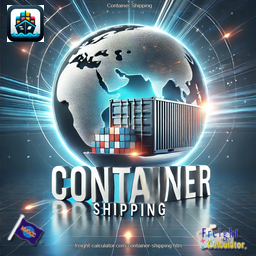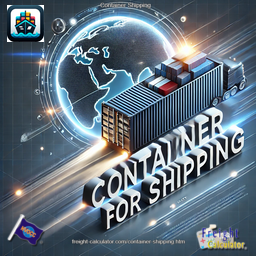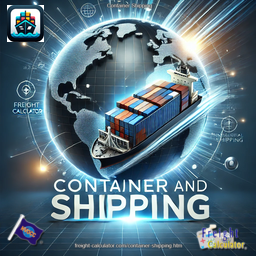


A shipping container is a large, standardized metal box used to transport goods internationally. These containers are built to withstand harsh conditions during ocean, road, or rail transport. There are various types of shipping containers, such as 20-foot and 40-foot containers, refrigerated containers, and high cube containers, all designed to accommodate different types of cargo.
Shipping containers have revolutionized global trade, allowing for efficient transportation of goods in large quantities. They protect cargo from damage and theft and can be easily transferred between ships, trucks, and trains, facilitating a smooth shipping process.

There are several types of shipping containers, each designed to suit specific cargo needs:
20-Foot Standard Container: Ideal for transporting smaller, denser goods, this container offers about 1,170 cubic feet of space.
40-Foot Standard Container: Providing double the space of a 20-foot container, this is suitable for larger volumes of goods, offering 2,390 cubic feet of space.
High Cube Container: Similar to the 40-foot container but with an extra foot of height, making it ideal for bulky goods requiring more space.
Refrigerated Containers: Also known as reefers, these containers are used to transport perishable items at controlled temperatures.
Open-Top Containers: Designed for oversized cargo that cannot be loaded through standard doors, open-top containers allow for easier loading from the top.

The size of the container you choose can significantly impact your shipping costs. Here's a breakdown of the common container sizes:
20-Foot Container: Offers about 1,170 cubic feet of capacity, suitable for smaller shipments.
40-Foot Container: Provides 2,390 cubic feet of capacity, ideal for larger shipments.
High Cube Container: With 2,690 cubic feet, it's perfect for goods that require more vertical space.
Choosing the right container size ensures you maximize the space while minimizing costs. The shipping container size will depend on the volume and type of goods you are shipping.

The cost of shipping containers varies based on several factors:
Container Size: Larger containers like the 40-foot or high cube cost more than the standard 20-foot container but can hold significantly more cargo.
Weight and Density of Cargo: Heavier goods may require additional charges, especially if they exceed weight limits.
Shipping Route: The distance and complexity of the shipping route also play a significant role in determining the cost of shipping containers.
Type of Goods: Special goods, like refrigerated items, require specialized containers, which can increase the overall shipping costs.

Freight-Calculator.Com provides an efficient way to calculate shipping container costs. Our Container Shipping Rates Calculator allows you to get instant quotes based on your shipment's size, weight, and destination. Simply enter the details of your container shipment, and our calculator will provide accurate pricing for both Full Container Load (FCL) and Less Than Container Load (LCL) shipments.
Our tool ensures that your container shipping is seamless, whether you're shipping internationally or domestically. By using the Freight Calculator, you can easily compare costs, choose the right container, and plan your shipment effectively.
Choosing the right shipping container depends on the type of goods you're transporting, the volume of your cargo, and the destination. For businesses or individuals shipping large volumes of goods, the 40-foot container or high cube container is ideal. However, if you're shipping a smaller load, the 20-foot container might be a better option.
Additionally, if you're shipping perishable goods, a refrigerated container will be necessary to keep your cargo at a controlled temperature throughout the journey.
